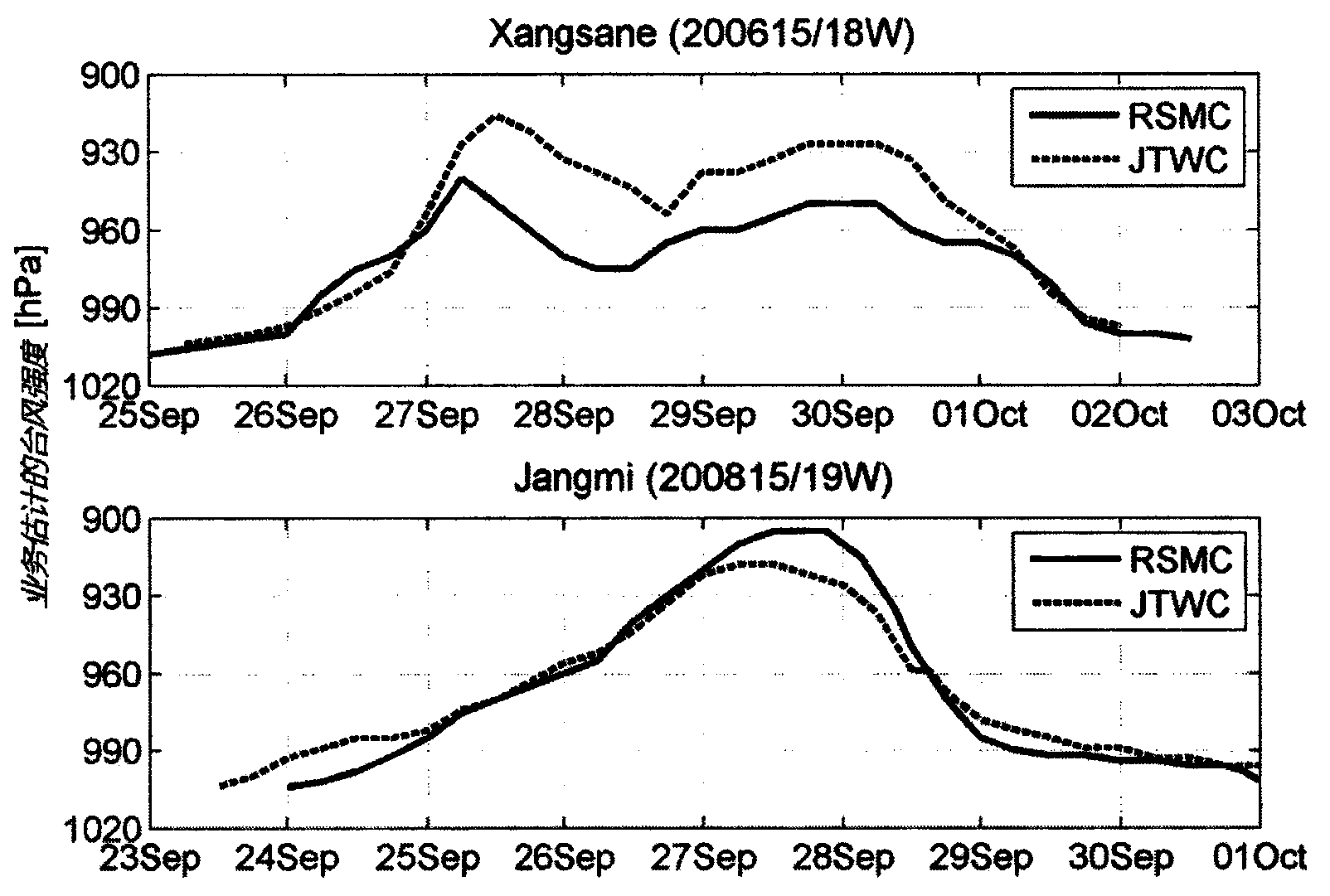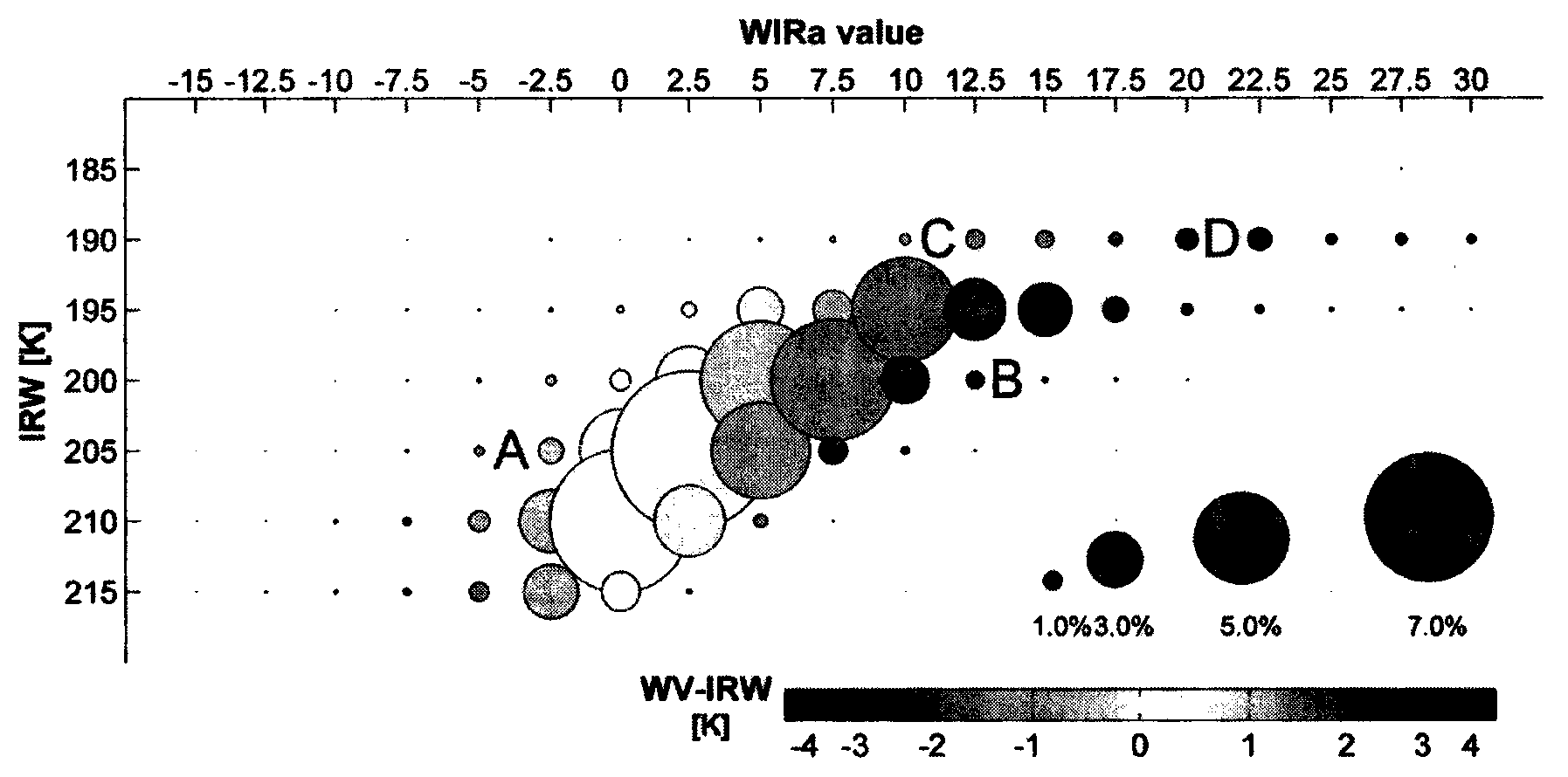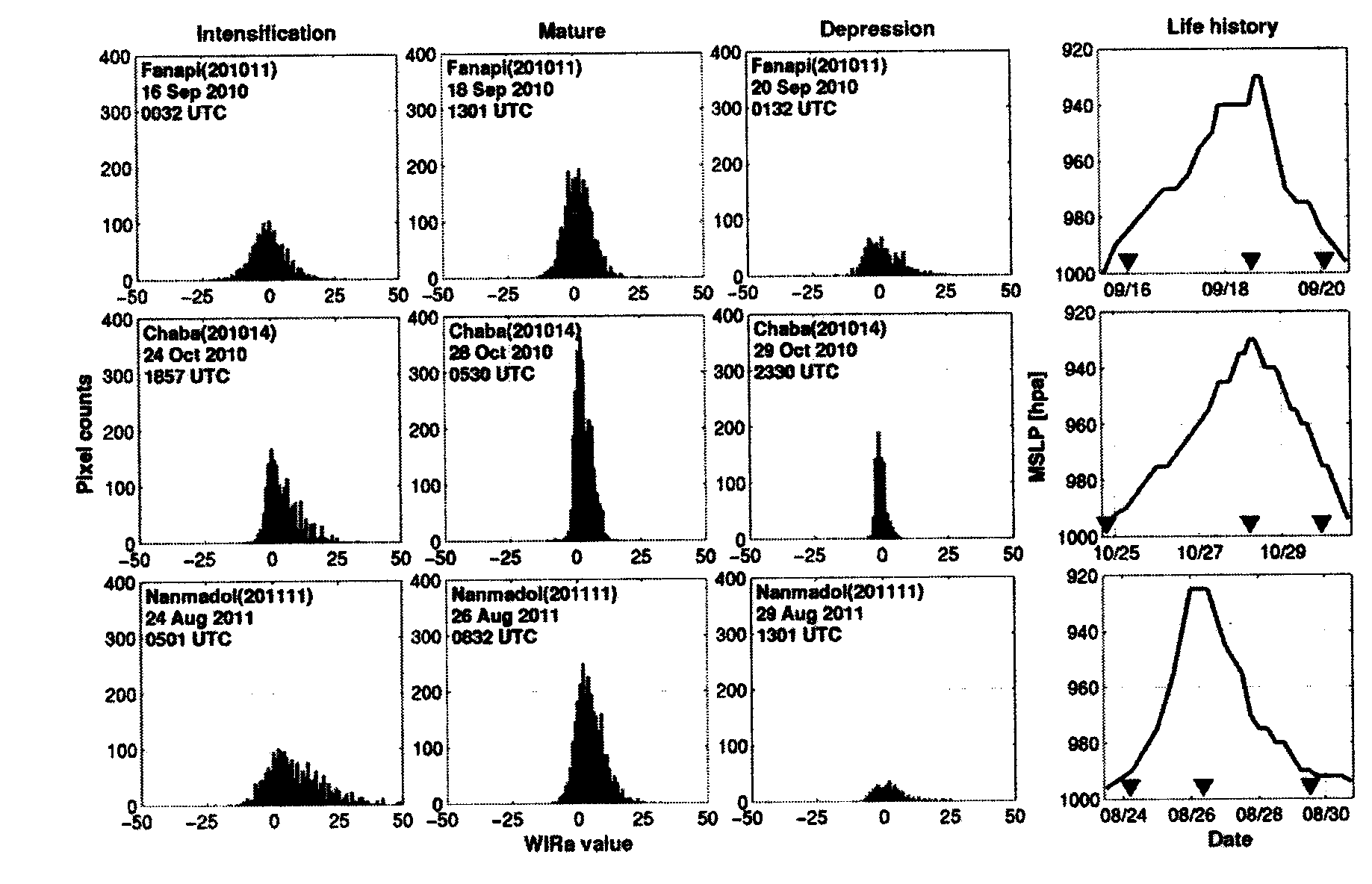Method to estimate intensity of tropical cyclone across the Northwest Pacific Ocean by using geostationary meteorological satellite image
A geostationary meteorological satellite, tropical cyclone technology, applied in the field of atmospheric scientific research, can solve the problems of cirrus cloud interference and divergence in the IRW cloud image of the geostationary meteorological satellite
- Summary
- Abstract
- Description
- Claims
- Application Information
AI Technical Summary
Problems solved by technology
Method used
Image
Examples
Embodiment Construction
[0036] The scheme of the present invention is described in detail below:
[0037] The first step is preprocessing:
[0038] We selected all 35 strong typhoon cases from 2006 to 2011, and the detailed information is shown in Table 2:
[0039] Table 2. Names and IDs of 35 strong typhoon cases.
[0040]
[0041] The brightness temperature information of the infrared window area and the water vapor channel of the typhoon core area is extracted from the satellite cloud images of equal latitude and longitude at various times corresponding to the typhoon. The core area refers to the area within 150km from the center of the typhoon.
[0042] The second step is to confirm the WIRa parameters:
[0043] This parameter can distinguish common convection from cirrus, penetrating convection, and water vapor anomalies on static satellite cloud images. Its theoretical basis is as follows: As shown in Table 3, the negative Tb WV-IRW is caused by cirrus clouds and weak convection, and the...
PUM
 Login to View More
Login to View More Abstract
Description
Claims
Application Information
 Login to View More
Login to View More - R&D
- Intellectual Property
- Life Sciences
- Materials
- Tech Scout
- Unparalleled Data Quality
- Higher Quality Content
- 60% Fewer Hallucinations
Browse by: Latest US Patents, China's latest patents, Technical Efficacy Thesaurus, Application Domain, Technology Topic, Popular Technical Reports.
© 2025 PatSnap. All rights reserved.Legal|Privacy policy|Modern Slavery Act Transparency Statement|Sitemap|About US| Contact US: help@patsnap.com



